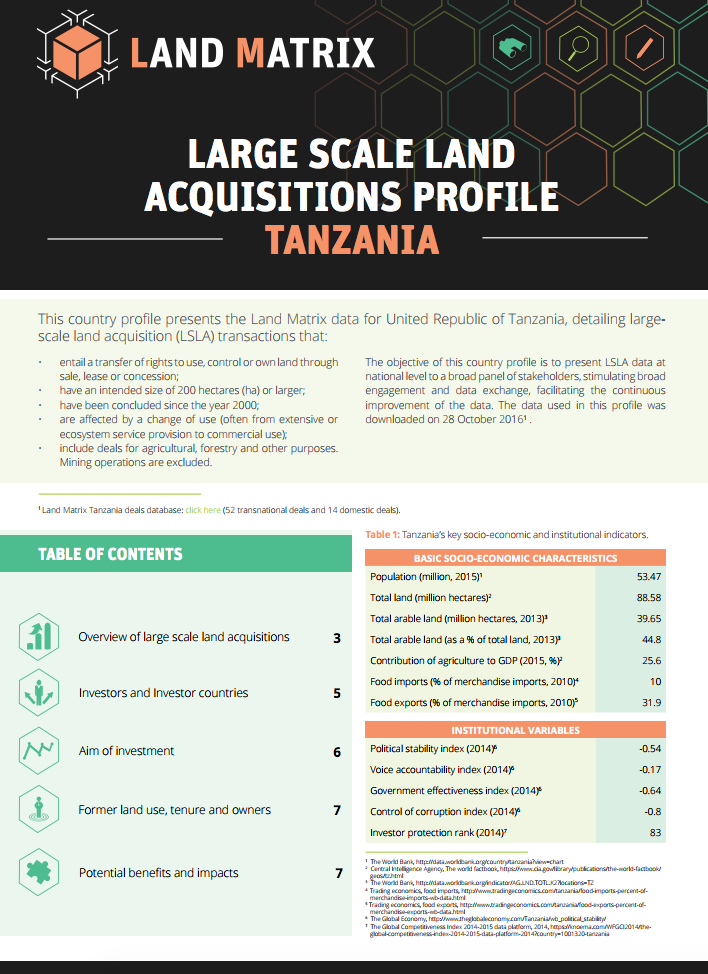Land Matrix Tanzania Country Profile
Resource information
Date of publication
Novembro 2016
Resource Language
Pages
8
License of the resource
Through collecting data on large-scale land transactions, the Land Matrix increases transparency to foster accountability of investors and other parties involved in large-scale land transactions. The Land Matrix aims to contribute in an innovative and relevant way to the growing movement towards open development - allowing for greater public involvement in critical decisions that affect the lives of land-users around the world.
The LM Africa Focal Point developed a detailed profile of large-scale land acquisitions in Tanzania.
Publisher(s)
Data Provider
Geographical focus


